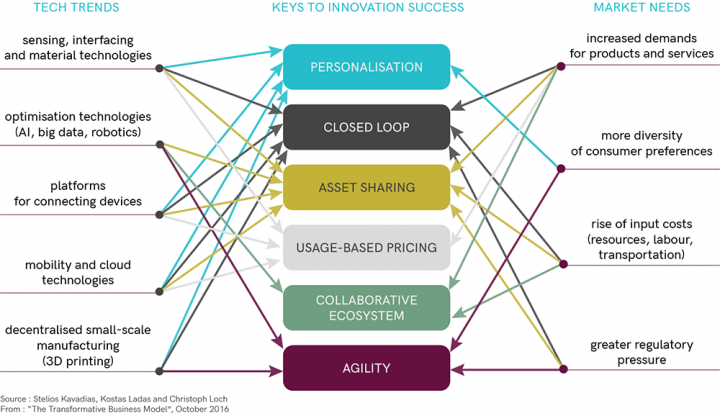What is a business model?
A “business model” can be defined as the policy a company has adopted to create value. The features of the model define a company's customer value proposition and pricing mechanism, the way it is organised and with whom it will initiate partnerships to produce value, and how it will structure its supply chain.
A business model is a system that determines a company’s success.
A dominant business model tends to emerge over time, reflecting the most efficient way to allocate and organise resources. Most attempts to introduce a new model will fail, but once in a while, the dominant model is overturned, usually by leveraging a new technology that offers an answer to new or changed market needs.
If the new model is then adopted by new players and by competitors, the industry has been transformed.
A very well-known example is Airbnb that has reshuffled the entire hotel industry. Founded in 2008, the company has experienced a stupendous growth: It now has more rooms than either InterContinental Hotels or Hilton Worldwide. The key to success here is the use of "platform technology". Before platform technology existed, there was no reason to change the hotel business in any meaningful way. But after its introduction, the dominant business model became vulnerable to attack from anyone who could leverage that technology to create a more compelling value proposition for customers.
The new business model (adopted by Airbnb, Amazon, Bol.com and other major players in the field) serves as the interface between what technology enables and what the marketplace wants.
Keys to success

Personalised product or service
Many new models offer products or services that are better tailored than the dominant models to customers’ individual and immediate needs. Companies often leverage technology to achieve this at competitive prices.
Example:
Mass-costumization: use of flexible computer-aided manufacturing systems to produce custom output. Such systems combine the low unit costs of mass production processes with the flexibility of individual customization.
Closed loop consumption process
Many models replace a linear consumption process (in which products are made, used, and then disposed of) with a closed loop, in which used products are recycled. This shift reduces overall resource costs.
Asset sharing
Some innovations succeed because they enable the sharing of costly assets—Airbnb allows home owners to share them with travelers, and Uber shares assets with car owners. Sometimes assets may be shared across a supply chain. The sharing typically happens by means of two-sided online marketplaces that unlock value for both sides: I get money from renting my spare room, and you get a cheaper and perhaps nicer place to stay. Sharing also reduces entry barriers to many industries, because an entrant need not own the assets in question; it can merely act as an intermediary.
Usage-based pricing
Some models charge customers when they use the product or service, rather than requiring them to buy something outright. The customers benefit because they incur costs only as offerings generate value; the company benefits because the number of customers is likely to grow.
Collaborative ecosystem
Some innovations are successful because a new technology improves collaboration with supply chain partners and helps allocate business risks more appropriately, making cost reductions possible.
Agile and adaptive organisation
Innovators sometimes use technology to move away from traditional hierarchical models of decision making in order to make decisions that better reflect market needs and allow real-time adaptation to changes in those needs. The result is often greater value for the customer at less cost to the company.




